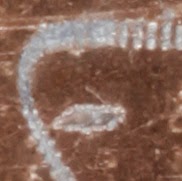What It's About
Our video is intended to give the viewer some basic facts about animals here in the Academy, including:- origin of a couple of the butterflies in the rainforest exhibit
- the habitat of the giant sea bass
- some cool scientific facts about rays
- and some background about our mascot Claude, the albino alligator
Basic Plot: A nervous / curious butterfly escapes the rainforest exhibit to visit the giant sea bass in the aquarium, the rays in the tank by the planetarium, and Claude the albino alligator in the swamp while learning about the unique facts of each animal.
How We Made It
These are the ten steps we took to create this project:- brainstormed ideas on what the video will be about (settling on the idea of animal voice-overs)
- chose what animals to do voice-overs of
- split up into teams to research each animal and write a script
- filmed footage of each animal
- edited the footage using Adobe Premiere in our teams
- put the separate clips together into one video
- presented the first draft (very rough cut)
- received feedback on the rough cut
- changed some elements based on the feedback
- TA-DAAAA!!! :D
What We Learned
Here are a couple of the many things we learned from making our voice-over video, and how we can improve for our upcoming projects:- background information of some of the animals at the Academy
- how to use Adobe Premiere to edit video and other assets
- the creative design process (filming, adding music/voice overs, editing sequences, etc.)
- the amount of video we need before editing (a lot)
- the specific methods of filming (panning, tilting, zoom, rule of thirds)
- how to improve after getting feedback
- the importance of time management
- how to work in teams
- asset gathering
- Creative Commons (copyright policies)
We had a lot of fun in making this video together- I hope you enjoy it too! :)
And now, without further ado, "Butterfly Flight through the Academy."
And now, without further ado, "Butterfly Flight through the Academy."
Blog post prepared by Emma.











